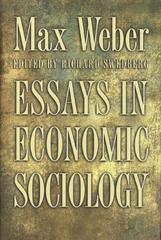Please answer all (a-m) with workings out, thanks so much in advance.
2. Health Insurance, Death Spirals, and Screening: 40 points Pawnee and Eagleton are two neighboring cities with equal population. However, the residents of Eagleton are far more healthy than Pawnee residents. The residents of Ea- gleton have a 5% probability of requiring medical attention, while this probability for Pawnee residents is 15%. When a person requires medical attention, they must spend 15, 000 to recover, or else they would die. Eagleton residents are also richer than Pawnee residents. Eagleton residents earn a yearly income of $96, 100 and Pawnee residents earn a yearly income of $48, 400. The residents of both towns neglect to save, i.e., they spend their entire income on consumption They all have the same utility (Please provide answers accurate to the second decimal point.) a. What is the expected utility of Pawnee and Eagleton residents without health insur- ance? Underline your answers. (2 points) There are competitive health insurance companies selling to residents in both Pawnee and Eagleton. They offer a menu of health insurance contracts. There is the low-deductible contract that covers all medical costs above $3, 000. In essence, the insurance company pays out $12, 000 to their policyholders when they require medical attention (since medi- cal expenditure is $15, 000). The other option is the high-deductible contract, which cov- ers medical costs above $x, where x is strictly greater than $3, 000 and strictly smaller than $15, 000 (15, 000 > x > 3, 000). In essence, the insurance company pays out $15, 000 x to their policyholders when they require medical attention. (Do not solve for x.) b. What is the actuarially fair premiumthe premium such that insurance companies make zero protfor both contracts sold to Pawnee residents? Underline your an- swers. (2 points) c. What is the actuarially fair premium for both contracts sold to Eagleton residents? Underline your answers. (2 points) Since insurance companies are competitive, they charge the actuarially fair premium. Furthermore, insurance companies are allowed to discriminate the Pawnee residents from the Eagleton residents, i.e., they can offer differing rates to Pawnee and Eagleton resi- dents. d. What is the expected utility of an insured Pawnee resident under the low-deductible contract and the high-deductible contract, respectively? Underline your answers. Hint: Here, in contrast to the notes, the price of insurance enters the utility function for each state of health. For example, when the agents are healthy their utility is u (yearly income price of insurance) . (2 points) e. What is the expected utility of an insured Eagleton resident under the low-deductible contract and the high-deductible contract, respectively? Underline your answers. (2 points} f. Which contract would Pawnee and Eagleton residents choose? (1 point) 3 Pawnee and Eagleton united to form a single large town called Pawgleton. The union does not change the health and income status of the residents. However, residents who used to live in Pawnee believe that they should be entitled to the same rates as those originally from Eagleton. A law was passed so that insurance companies cannnot dis- tinguish whether policyholders were originally from Pawnee or Eagleton. Furthermore, insurance companies are forced to sell at the actuarially fair premium for the whole pop- ulation of Pawgleton. This was referred to as the pooling mechanism. Ben Wyatt decided to calculate the welfare gains or costs of this policy. g. What is the actuarially fair premium for both contracts sold to the Pawgleton resi- dents? Underline your answers. Hint: Since Pawnee and Eagleton are of the same population size, what is the average probability of requiring medical attention in Pawgleton? (2 points) h. Would Pawgleton residents who used to live in Eagleton buy health insurance? If so, which contract? (4 points) i. Would Pawgleton residents who used to live in Pawnee buy health insurance? If so, which contract? (4 points) j. Would health insurance companies still choose to sell to Pawgleton residents? Ex- plain your answer in one sentence. (4 points) Ben Wyatt enlists the help of his friend Ann Perkins, who is a savy healthcare worker. Ann suggested that Pawgleton should consider allowing insurance companies to screen their policyholders, i.e., a screening mechanism. Specifically, Ann thinks that Pawgle- ton authorities should change the law and allow insurance companies to create a menu and charge the actuarially fair premiums for low-deductible policies at the level found in Part b. (the actuarially fair premiums for old Pawnee residents), while charging the actuarially fair premiums for high-deductible policies at the level found in Part c. (the actuarially fair premiums for old Eagleton residents). Under Ann's setup, the screening mechanism would have original Pawnee residents choosing the low-deductible contract, while original Eagleton residents choose the high-deductible contract. k. Suppose x = 9,000, then which contracts would original Pawnee and Eagelton resi- dents purchase, respectively? Did Ann's screening mechanism work? (5 points) 1. Suppose x = 14,000, then which contracts would original Pawnee and Eagelton residents purchase, respectively? Did Ann's screening mechanism work? (5 points) m. Explain why the welfare under the screening mechanism that Ann proposed would provide a higher welfare than the pooling mechanism in one sentence. (5 points)








